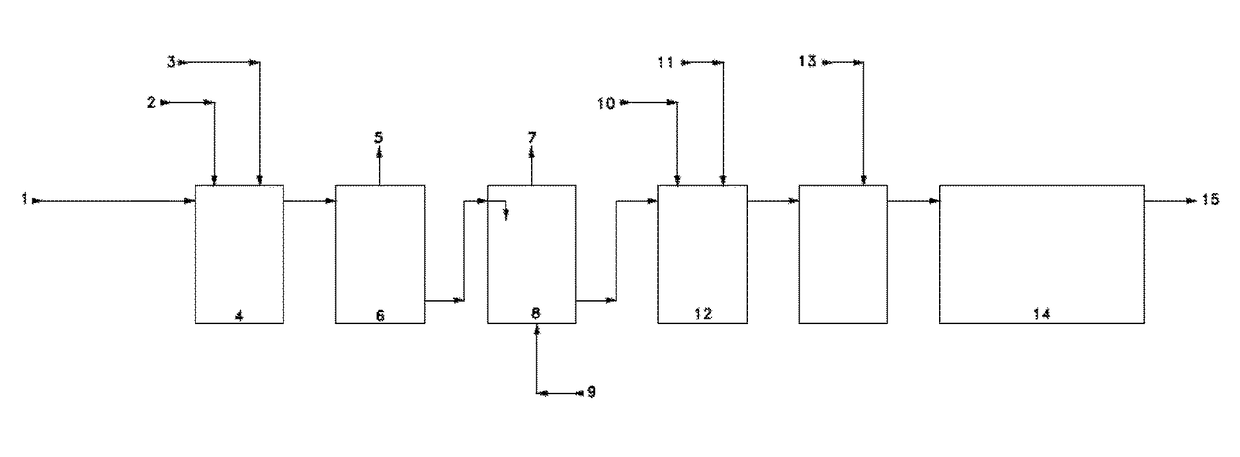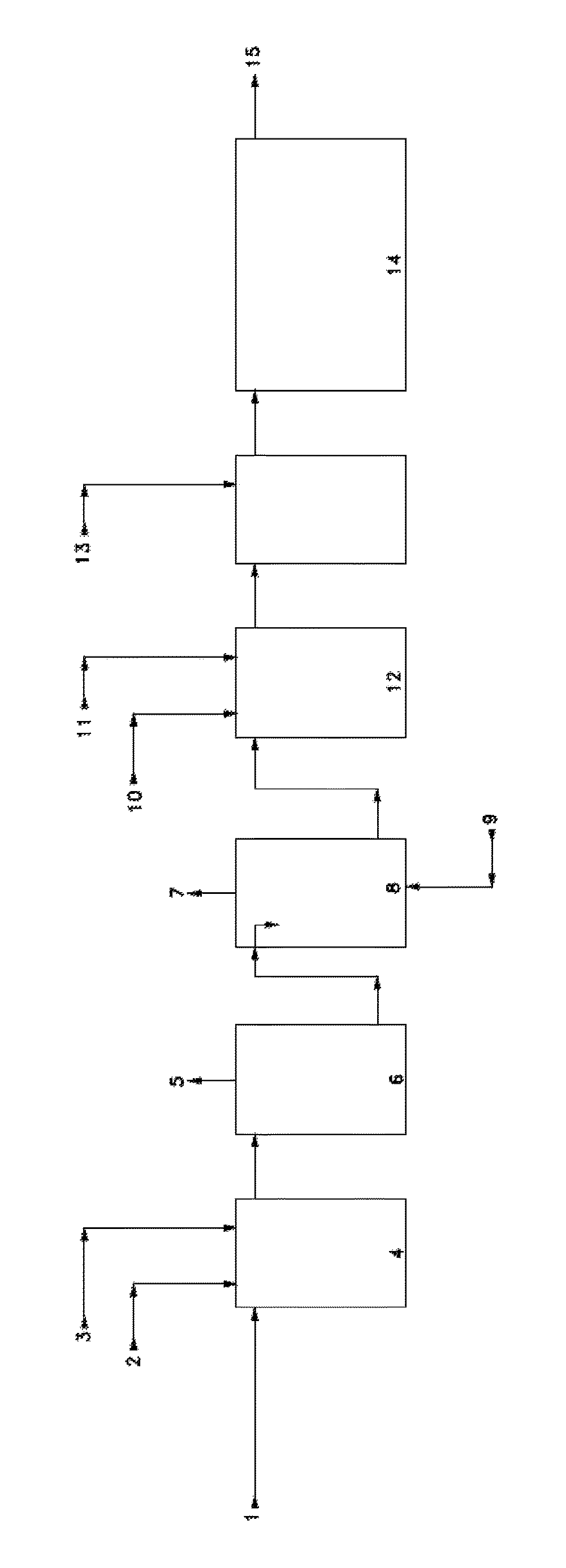Process for treating waste water utilizing an agitated liquid and electrically conductive environment and electro chemical cell
a technology of waste water and electrochemical cells, applied in other chemical processes, water/sewage multi-stage treatment, separation processes, etc., can solve the problems of insufficient quality and inability to release water into the environment, and achieve the effect of reducing solubility, reducing the flow rate of effluent, and significant treatment benefits
- Summary
- Abstract
- Description
- Claims
- Application Information
AI Technical Summary
Benefits of technology
Problems solved by technology
Method used
Image
Examples
Embodiment Construction
[0016]It is the intention of this disclosure to describe a method and process that can be utilized in the treatment of waters generated from processes that involve organic and other materials. This process can be directly applied to production waters (effluent) that result from drilling and hydro fracturing activities that are currently in use as well as other waters that are similar in nature. These waste waters or effluent can start the process having an opaque black appearance. The contaminants do not settle out of suspension. These effluents may contain various substances such as hydrochloric acid, glutaraldehyde, 2,2 Dibromo-3-nitriloprpionamide, peroxodisulfates methanol, potassium hydroxide, sodium acrylate, polyacrylamide, citric acid, thioglycolic acid, ammonium chloride, thylene glycol, polyaccrylate, methanol and isopropanol. The appearance of the treated effluent at the end of the process described in this disclosure is clear. This result is achieved by the addition of c...
PUM
| Property | Measurement | Unit |
|---|---|---|
| pH | aaaaa | aaaaa |
| pH | aaaaa | aaaaa |
| organic | aaaaa | aaaaa |
Abstract
Description
Claims
Application Information
 Login to View More
Login to View More - R&D
- Intellectual Property
- Life Sciences
- Materials
- Tech Scout
- Unparalleled Data Quality
- Higher Quality Content
- 60% Fewer Hallucinations
Browse by: Latest US Patents, China's latest patents, Technical Efficacy Thesaurus, Application Domain, Technology Topic, Popular Technical Reports.
© 2025 PatSnap. All rights reserved.Legal|Privacy policy|Modern Slavery Act Transparency Statement|Sitemap|About US| Contact US: help@patsnap.com


